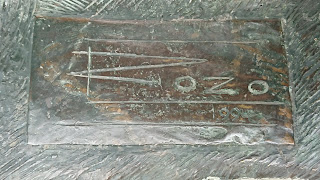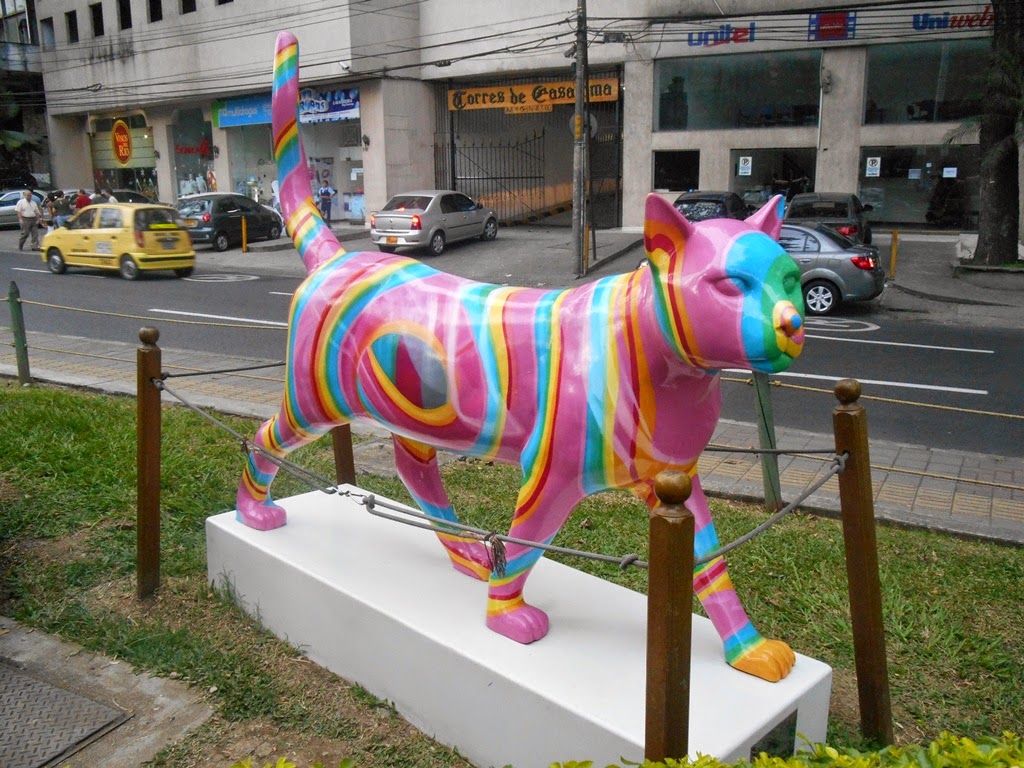Rómulo Rozo (1899-1964) fue un escultor colombiano considerado uno de los más destacados del arte moderno en Colombia. Nació en Chiquinquirá, Boyacá, y desde joven mostró gran talento artístico. A lo largo de su carrera, desarrolló un estilo profundamente influenciado por la identidad y las raíces indígenas colombianas, convirtiéndose en un referente del indigenismo en las artes. Rozo también se destacó por su capacidad de capturar la esencia de la cultura nacional a través de su escultura, buscando transmitir no solo la forma sino también el alma de sus sujetos.
 |
| Rómulo Rozo y Miguel A Menéndez Fuente: https://commons.wikimedia.org/wiki/File:R%C3%B3mulo_Rozo_y_Miguel_A._Men%C3%A9ndez.jpg |
Entre sus obras más reconocidas se encuentra La Bachué, una escultura monumental que representa a una madre indígena, una figura que se ha vuelto emblema de la identidad colombiana. Rozo también realizó trabajos de gran envergadura en otros países de América Latina, especialmente en México, donde su trabajo tuvo un impacto significativo.
En cuanto a su legado, muchos de sus trabajos se encuentran en espacios públicos de Colombia y otros países, y su influencia perdura en la historia del arte colombiano.
 |
| Momentos - Rómulo Rozo Fotografía: Leonardo Bernal T. |
Fue reconocido por su estilo único que fusiona la tradición indígena con la modernidad. Su obra abarca una amplia gama de temas, desde representaciones de la cultura autóctona hasta figuras más abstractas. Entre sus muchas esculturas, Momentos destaca como una de sus creaciones más emblemáticas, ubicada en la ciudad de Medellín, en la dirección Circular 73 x Transversal 37 (Edificio Portal de la 73), en el sector de Laureles.
 |
| Momentos - Rómulo Rozo Fotografía: Leonardo Bernal T. |
 |
| Momentos - Rómulo Rozo Fotografía: Leonardo Bernal T. |
La escultura Momentos fue realizada en bronce en 1994, y representa una de las constantes de Rozo: capturar la esencia del ser humano en el espacio. La obra invita al espectador a reflexionar sobre las etapas de la vida, transmitiendo emociones a través de sus formas sencillas pero profundas. El uso del bronce, material que Rozo dominaba, aporta una sensación de permanencia y fuerza, características que son comunes en muchas de sus obras públicas.
Este tipo de esculturas no solo embellecen el espacio urbano, sino que también nos conectan con la historia y la identidad cultural de Colombia, consolidando a Rozo como un pilar del arte colombiano moderno.
 |
| Momentos - Rómulo Rozo Fotografía: Leonardo Bernal T. |
 |
| Momentos - Rómulo Rozo Fotografía: Leonardo Bernal T. |
La obra del maestro Rómulo Rozo
Rómulo Rozo fue un escultor destacado por su profunda conexión con las raíces autóctonas de su país y por su capacidad para representar elementos de la identidad indígena y cultural latinoamericana a través de sus obras. Nacido en Chiquinquirá, Boyacá, en 1899, y radicado en México durante gran parte de su vida, su obra trascendió fronteras. Su escultura fusiona lo moderno con lo tradicional, como se puede ver en sus monumentales trabajos, que incluyen figuras que rinden homenaje a la cultura indígena.
Uno de sus logros más importantes fue el Monumento a la Patria, una obra que refleja el simbolismo indígena y el mestizaje cultural, ubicada en Mérida, México. Además, Rozo fue conocido por sus esculturas en gran formato, utilizando materiales como el granito y el bronce. Su estilo fue influenciado por el indigenismo y las culturas prehispánicas, pero también fue un precursor del arte moderno en Colombia.
 |
| Bachué, diosa generatriz de los chibchas Fuente: https://commons.wikimedia.org/wiki/File:Bachu%C3%A9,_diosa_generatriz_de_los_chibchas.jpg |
Rómulo Rozo Peña fue un escultor y pintor, precursor del arte moderno en Colombia. Tras estudiar en Europa, alcanzó reconocimiento internacional con obras como Bachué, inspirada en la mitología chibcha. En 1929, participó en la Exposición Iberoamericana de Sevilla, donde su trabajo recibió gran prestigio, y su influencia en el arte colombiano fue fundamental para el movimiento de Los Bachués. En 1931, se trasladó a México, donde desarrolló importantes obras como el Monumento a la Patria en Mérida. Rozo también vivió en la pobreza a pesar de su éxito artístico. Su obra incluye esculturas de gran relevancia como El Pensamiento y el Monumento a las Leyes de Reforma. Fue maestro y figura clave en la historia del arte latinoamericano.
Entre sus trabajos más destacados también se encuentran el Monumento a la Bandera en Mérida, y su participación en diversos monumentos públicos que marcaron un hito en la historia del arte escultórico latinoamericano [1], [2].















































